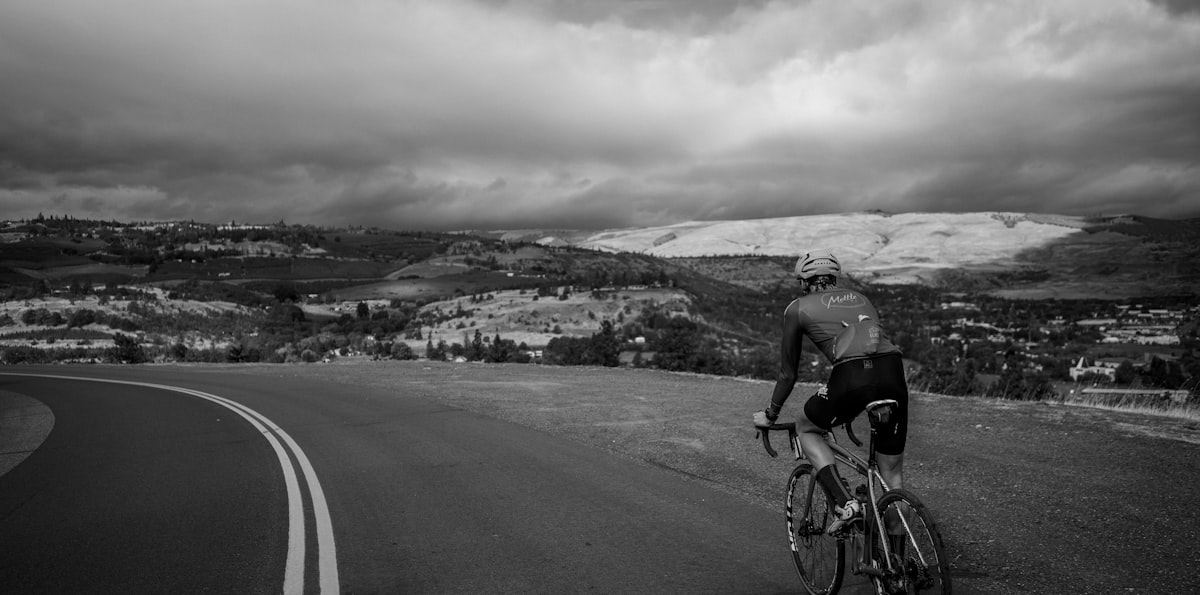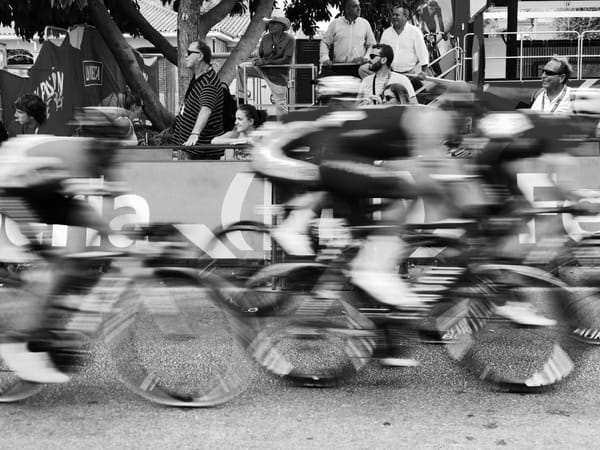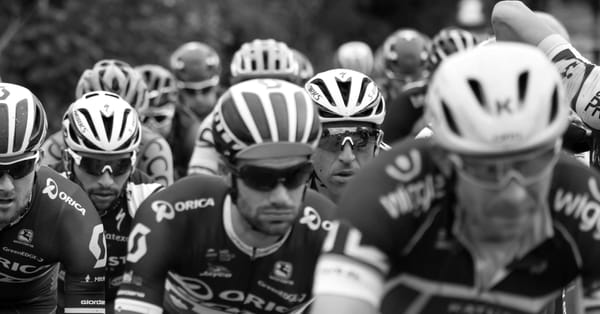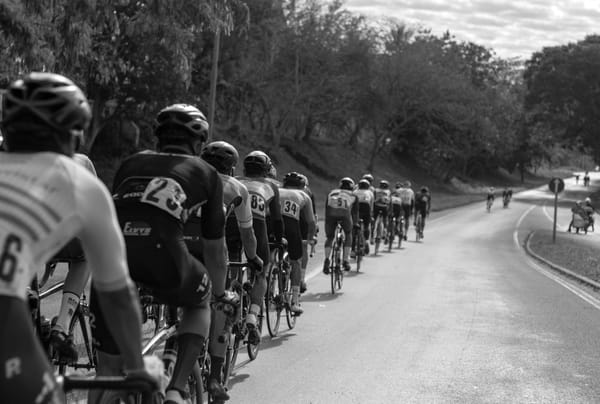Development Meters in Cycling: A Guide to Gear Ratios and Performance

Ever changed gears on your bike and wondered exactly how far one pedal stroke propels you down the road? That’s where the term “development meters” comes into play. In cycling, development meters (also called metres of development or rollout distance) measure how many meters your bicycle travels with each full turn of the pedals. In other words, it’s a way to express your cycling gear ratios in terms of real-world distance. This concept is especially popular among track racers and riders in countries using the metric system, but it’s useful knowledge for any cyclist looking to fine-tune their performance.
For a moderately experienced cyclist, understanding development meters can be a game-changer. It bridges the gap between the abstract notion of gear tooth counts and tangible distance on the road. By learning to think in development meters, you can better choose the right gear for a climb, a sprint, or a long flat effort – ultimately improving your overall cycling performance. In this article, we’ll dive into the history of the term, break down what development meters actually mean (with a handy formula for bike gear calculation), and explore how this knowledge can boost your riding strategy. Let’s roll out!
History of the Term
The idea of measuring gear size by distance per pedal revolution has been around for over a century. In the late 1800s, cyclists riding high-wheeler penny-farthing bicycles spoke about gear size in terms of wheel diameter (inches). A “50-inch” or “60-inch” high-wheel bike referred to the front wheel’s diameter – and a larger wheel traveled farther with each pedal turn. As chain-driven bikes with gears emerged, riders needed a way to compare them to those giant wheels. This gave birth to the concept of gear inches, translating a given gear ratio into the equivalent direct-drive wheel diameter. For example, a bike gear that let you go as fast as a 56-inch penny-farthing would be described as “56 gear inches”. Gear inches became a common term in English-speaking cycling circles and early literature.
Meanwhile, European cyclists favored a metric approach. The term “développement” (French for development) was introduced to describe the same idea but in meters. Instead of inches of wheel diameter, they spoke about how many meters the bike moves per pedal stroke. This meters of development metric naturally fit with track cycling, where velodromes and race distances are measured in meters. By the mid-20th century, development meters had become standard in many cycling communities outside the English-speaking world. The Union Cycliste Internationale (UCI), cycling’s global governing body, adopted development meters to set gear limits in youth and track racing. For decades, junior racers were limited to a maximum rollout (development) – often 7.93 m (about 26 feet) per pedal revolution – to keep gearing manageable. Officials would even check bikes with a roll-out test: if one crank rotation pushed the bike more than 7.93 m, the gearing was illegal.
Over time, the use of development meters has evolved from a niche European preference to a concept recognized by cyclists worldwide. Today, even if you’re used to thinking in gear inches or simply in terms of “big ring vs small ring,” it’s worth also understanding development in meters. With cycling technology and globalization, riders and coaches often use both imperial and metric terms. Many modern gear calculators and apps include development meters as an option, and the term is common in track cycling discussions and gear charts. In summary, development meters grew from early 20th-century European cycling jargon to a globally relevant metric, paralleling the older gear-inch system but tailored to the metric world.
What Does “Development Meters” Mean?
Simply put, development meters is the distance your bike travels with one full pedal revolution, given a certain gear combination. It connects your bike’s mechanical gear ratio with the real distance covered on the ground. Here’s a clear breakdown of how it works:
Gear Ratio
This is the ratio of your front chainring teeth to your rear sprocket (cassette) teeth. For example, if you have a 40-tooth chainring and a 20-tooth rear cog, your gear ratio is 40/20 = 2.0. This ratio means the rear wheel turns 2 times for each full turn of the pedals. A larger gear ratio (e.g. 4.0 from 52÷13) means a harder gear – the wheel spins more times per pedal stroke – while a smaller ratio (e.g. 1.2 from 36÷30) means an easier gear.
Wheel Circumference
This is the distance your wheel covers in one rotation. It depends on your wheel diameter and tire size. For a standard road bike with 700×23c tires, the wheel’s diameter is about 0.668 m (668 mm), so the circumference is that times π (3.14), roughly 2.1 m. Mountain bikes or different tire sizes will have different circumferences, so it’s important to use the right value for accuracy.
Development (m) Calculation
To get the development in meters, multiply the wheel circumference by the gear ratio. The formula is:
Development(m) = Wheel Circumference(m) * Front Chain Ring Teeth / Rear Sprocket TeethFor example, imagine you’re using a 52-tooth front chainring and a 26-tooth rear sprocket on a road bike. The gear ratio is 52/26 = 2.0. If your wheel circumference is about 2.1 m, the development is 2.0 × 2.1 m = 4.2 m per pedal revolution. In other words, every time you turn the cranks once, the bike rolls about 4.2 meters forward in that gear. If you switch to a different gear, say 52×13, the ratio becomes 4.0 and the development would be 4.0 × 2.1 = 8.4 m per stroke – a much bigger jump per pedal. On the flip side, a small climbing gear like 34×30 (ratio ~1.13) on that same wheel might only move ~2.4 m per pedal turn, but it will feel much easier on a hill.
The beauty of using development meters is that it gives you a tangible sense of gearing. Instead of just saying “I’m in my 50/12 gear,” you can say “I’m pushing a 9-meter development.” That puts into perspective how hard you’re working – 9 m per pedal stroke is a huge gear (great for all-out speed on a downhill or sprint), whereas a 2.5 m development is very low (good for spinning up a steep climb). The concept itself is straightforward once you break it down: it’s just wheel circumference × gear ratio. Many cyclists find this easier to visualize than remembering tooth counts on cogs. In fact, some coaches and riders literally measure the rollout by marking a wheel revolution on the ground to check development – a practice carried over from those junior gear limit checks.
Practical Benefits of Understanding Development Meters
Grasping development meters isn’t just an academic exercise – it has practical benefits that can improve your riding and decision-making on the bike. Here are several ways understanding this concept can help:
Smarter Gear Selection
Knowing how to calculate and compare development meters allows you to choose gears more wisely for terrain and conditions. Instead of guessing whether a 50×17 or a 50×19 is better for a given section, you can figure out the distance per pedal stroke and select what keeps your cadence comfortable. For instance, if you prefer a high cadence, you might opt for a gear that gives around 5 m of development on flat roads, so you can spin ~90 RPM at a moderate speed. If you’re prepping your bike for a hilly ride, you’ll look for smaller developments (maybe 3–4 m) for the toughest climbs. This beats simply counting sprocket teeth – you’re directly comparing how far each gear will take you, which is intuitive. As one cycling resource points out, talking in meters traveled per pedal revolution “makes it very clear what is happening as you change gears” and is easy to grasp even for those not used to thinking in gear-tooth pairs. In short, development meters let you visualize your gear range in real-world units, helping ensure there are no “surprise” too-hard or too-easy gears during your ride.
Optimizing Cadence and Efficiency
Efficient cycling is all about maintaining a cadence (pedal rpm) that lets you produce good power without tiring out too quickly. If you only think in terms of gears (“53/12 is my big gear”), you might not realize how that translates to your speed and effort. By considering development meters, you link your gear choice to your cadence and speed. For example, a moderately strong rider might find that about 6–7 m of development at ~90 RPM yields a nice fast cruise on flat terrain. Use a much bigger gear (say 9+ m development) with the same cadence, and you’d be flying – but most likely, you can’t sustain that cadence in such a high gear for long. It would force you to slow your pedaling (low RPM, high force per stroke) which can lead to fatigue or even knee strain. On the other hand, if you’re in a very easy gear (perhaps 2–3 m development) on flat ground, you might spin out – pedaling furiously without going very fast. Knowing the development meter values of your gears helps you avoid these extremes. You can aim for that “sweet spot” gear that lets you maintain an efficient cadence. Essentially, too high a development (big distance per stroke) will have you grinding slowly – great for short bursts of speed or downhills, but taxing if overused. Too low a development will have you spinning without resistance – fine for slow climbs or recovery, but not effective when you need speed. The key is to match your gear (development) to the terrain and your fitness so you stay in an efficient pedaling zone. This understanding can markedly improve your endurance and power output over a ride.
Fine-Tuning Race and Training Strategy
Competitive cyclists, especially on the track, talk about gear development as part of their race strategy. On a velodrome, where races are won by fractions of a second, riders choose specific development meter settings to balance acceleration and top-end speed. For example, a sprinter in a track race might choose a very high development (e.g. ~7.5 m or more) so that each crank revolution covers a lot of ground – crucial when hitting top speed in the final sprint. But if they go too high, they risk sluggish acceleration at the start. Conversely, a rider in a longer points race might favor a slightly lower development that they can accelerate quickly and pedal at high cadence for longer periods. Even road racers consider development: a breakaway rider might push a big gear (high development) on a descent to increase speed, whereas a climber will use small developments to keep a rhythm on a mountain. By understanding the metric, you can simulate race scenarios in training – e.g., practicing holding a 100+ RPM cadence on a 7 m development to prepare for a sprint finish, or making sure you have a low enough gear (small development) for a steep uphill finish. It also helps in communication: riders and coaches can discuss gearing in terms of meters, which is unambiguous. Two riders on different equipment can both say “we’ll use about 7.2 m for the start of the time trial,” ensuring they’re on the same page even if one has a 51×14 and another has 53×15 (slightly different tooth counts, but both roughly 7.2 m rollout). This way, gear comparisons become easier across different setups.
Broadening Your Technical Know-How
For the cycling enthusiast who enjoys the tech side, learning about development meters opens the door to other related concepts. It ties directly into gear inches (the imperial version of rollout) – you might find yourself converting one to the other just out of curiosity. (For reference, 1 m of development is about 11.8 gear inches, and vice versa a 100-inch gear is ~8 m of development.) It also relates to cadence, speed, and even the concept of gain ratio (which factors in crank length for a more “biomechanical” view of gearing). Understanding development meters thus makes you a more informed cyclist. You’ll have a better sense of why your bike feels the way it does in each gear. And if you ever experiment with different wheel sizes or tire widths, you’ll appreciate how those changes affect your rollout. Many riders are surprised to learn that going from a worn tire to a new, taller tire slightly increases development (because of a bigger circumference). With a development mindset, you’ll catch these nuances and maybe even adjust your setup or riding style accordingly.
Common Mistakes to Avoid
While development meters is a straightforward concept, cyclists sometimes make a few mistakes when applying it to their riding. Here are some common pitfalls and how to avoid them:
Over-gearing without Realizing
A frequent mistake is choosing a gear with too large a development for your fitness, thinking it will make you faster. In reality, if you push a big gear (high meters development) that you can’t spin properly, you’ll end up grinding at a low cadence. This can quickly lead to fatigue or muscle strain. Avoid it: Use development meters to check yourself. If you find you’re riding at, say, 8–9 m development but only turning 60 RPM, try dropping to a gear around 6–7 m where you can pedal 90 RPM. You’ll likely feel fresher and maintain speed with less effort.
Under-gearing and Spinning Out
The opposite mistake is staying in an overly easy gear out of habit or caution – for example, spinning in a tiny gear on a flat road. If your development is very low (say 2–3 m on flat terrain), you might bounce at a super high cadence and still go nowhere fast. Avoid it: Don’t be afraid to shift up to a higher gear (larger development) when the situation allows. If you’re on a descent or sprinting on flat ground, you generally want a big enough development that you can apply power without immediately maxing out your cadence. Use your knowledge of development meters to identify which gear gives you a comfortable yet effective cadence for the speed – that often means increasing development as you accelerate.
Ignoring Wheel Size/Tire Factors
Another mistake is forgetting that development is affected by wheel circumference. Quoted development values (in charts or by other riders) usually assume standard wheel sizes. If you ride an unusual setup – like smaller 650c wheels, a folding bike, or even just significantly different tire sizes – the actual distance per pedal stroke can differ. For example, a 50×11 on a 29-inch MTB tire will cover more ground per turn than a 50×11 on a 26-inch wheel. Avoid it: Always account for your wheel and tire size when calculating development. If you use online calculators or tables, input the correct wheel diameter/tire size to get accurate numbers. This ensures you’re comparing apples to apples. It’s a small detail, but it can matter if you’re fine-tuning your setup or checking against a rollout limit.
Focusing Only on Development
While this article is all about development meters, don’t forget it’s just one piece of the puzzle. Some cyclists get so fixated on achieving a specific development (e.g., “I must have an 8.0 m gear for racing”) that they neglect other factors like crank length, cadence training, or personal comfort. Avoid it: Use development meters as a helpful guide, but also listen to your body. Just because pro track riders push 8+ meters doesn’t mean it’s right for you if you can’t sustain the corresponding cadence and power. Balance your gearing choices with training your cadence and leg strength. The goal is to improve performance, not just chase numbers.
By keeping these points in mind, you can make the most of the development meters concept without falling into the common traps. It’s all about using the metric to enhance your riding, not hinder it.
Conclusion
In the world of cycling, development meters might sound like technical jargon, but it’s actually a rider-friendly way to think about your gears. Instead of abstract gear ratios or cryptic gear inch numbers, development meters put it in real terms: how far you go with each pedal stroke. Understanding this term can enrich your insight into bike setup and boost your confidence on every ride – from selecting the right gear before a climb, to pacing yourself in a time trial, to comparing setups with your riding buddies. We’ve seen how the concept has historic roots yet modern relevance, and how it ties directly into performance through cadence and cycling gear ratios.
The takeaway is simple: knowing your bike’s development meters can make you a more informed and capable cyclist. Next time you’re out on the road or trail, take note of how your gear choices translate into distance. Try calculating the development of your favorite gear and see how it compares to others – you might discover why that one combo feels “just right” for your cruising speed. By applying this knowledge, you can fine-tune your training and riding strategy for better results.
Now that you’re fluent in development meters, you’re equipped to pedal smarter. So go ahead – put this insight into practice on your next ride and feel the difference it makes in your efficiency and speed. And if you enjoyed this deep dive into cycling tech and want to keep improving your ride, consider subscribing for more cycling insights and tips. Happy riding, and may each pedal stroke take you further than ever before!





